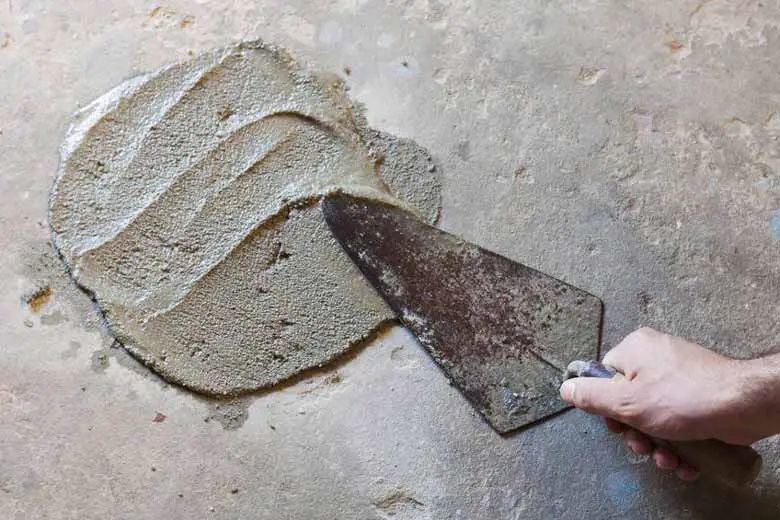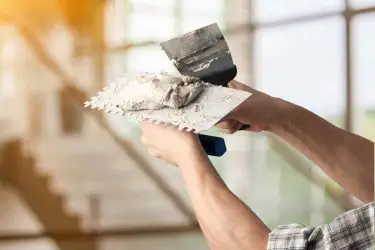No one wants to create more work for themselves than is necessary. So why should you put energy and resources into removing old concrete if it is not essential? Well, there’s good news for you.
Concrete can be poured over old concrete. Keep in mind that the new concrete is only as structurally sound as the old concrete, so this is a perfectly acceptable shortcut as long as the old concrete is not compromised or cracked in some way.
Sometimes it just does not make sense to remove the old concrete. This article will go over when it is appropriate to pour concrete over old concrete and the process and a few drawbacks. Continue reading for all you need to know about pouring concrete over old concrete.

Table of Contents
Things To Consider Before Pouring New Concrete
Many of the circumstances specific to your project will affect whether it is a good idea to pour new concrete onto an old slab.
Most notably, you should avoid pursuing this option if your old slab has significant cracks or tree roots growing through it. If this is the case, the best practice would be to safely remove the old slab before continuing with the new slab.
As you will see later on in this article, proceeding with pouring new concrete over cracked concrete (or some other kind of severely damaged concrete) will result in a subpar final product. If this is the case for you, you should consider removing the old concrete before pouring new concrete.
Related article: Is Old Concrete Stronger Than New Concrete?
This table provides a quick overview of the pros and cons of pouring concrete over old concrete that we will discuss shortly.
| Pros | Cons |
| You will save money. | New concrete is only as good as old concrete. |
| It is easier and more time-efficient. | The concrete could have a shorter lifespan. |
| You will use fewer resources | It raises the surface level. |
Pros
There are two big reasons that you might consider pouring concrete over old concrete – time and money – two things we are all trying to save. This section will detail the benefits of opting out of the removal of an existing slab of concrete.
- First, you will save money. So many of our daily decisions come down to money. We all want the best possible outcome for the lowest price tag, and your home improvement projects are no different. You can be sure to save money if you forgo removing the old slab of concrete. Whether you are an entire crew or a one-person operation, it will require additional time, hands, and equipment to get the job done.
- Second, it is easier and more time-efficient. Depending on the size of the project, it could take several hours or even a whole day to remove a concrete slab. Avoiding this job all together means you and your crew can move towards the end of the project much quicker. It is also just much more straightforward to pour the new slab on time than the old one.
- Third, you will use fewer resources. The resources required to remove a slab of concrete can include a sledgehammer, shovels, wheelbarrow, lots of safety equipment, and of course, working hours. If possible, it would be ideal to avoid this hassle altogether by pouring the new concrete slab right on top of an old one.
Cons
While it is perfectly safe and acceptable to pour new concrete over an existing slab, it has a few drawbacks. Consider these items before you make a decision.
- First, you can only count on your new slab being as structurally sound as the old one. The new slab of concrete will take on all of the old slab’s structural irregularities, which means that if the old one has cracks or settling damage, the new one will inherit all of the same issues. While there are ways to circumvent this (more on this later), it requires more work and attention to the problem.
- Second, your concrete may have a shorter lifespan. Similar to the previous point, because the new concrete is taking on all of the old concrete’s imperfections, it can significantly shorten the lifespan of the new slab. Concrete has an excellent reputation for its durability and lifespan, but it’s also susceptible to the surface to which it’s bonded. This means if you pour new concrete, it may only last as long as if it were the old slab.
- Third, it will undoubtedly raise the surface level. It is essential to consider the surface level before you begin your project. Pouring new concrete on old might cause a hazardous lip on the surface, resulting in falls or stubbed toes. If raising the surface level an inch or two won’t affect the outcome, then you don’t need to worry about this part.
How Do You Pour Concrete Over Existing Concrete?
1. Clean the Surface
The first step is to ensure that the old concrete surface is clean, completely clear of dirt, leaves, and other debris.
You want the cleanest possible surface to minimize your new pour’s imperfections and help your concrete bond properly.
You can use a pressure washer to remove stains. Leave the surface completely wet so that the old concrete does not absorb moisture from the new concrete.
2. Set Up Your Boundaries
If you are only pouring concrete on top of an existing slab and nowhere else, this step should be easy.
Using tape or flags, indicate the area and height where you will be pouring concrete. Use this to determine how much you will need.
You should also cover up any cracks using sand, styrofoam, or plastic sheets at this point in the process, which will protect the new layer from inheriting some of the old layer’s imperfections.
3. Determine if You Want a Bonding Agent
This step might be a little bit tricky, as there are conflicting opinions on whether or not you need a bonding agent.
Ultimately, it makes more sense to use a bonding agent if your old slab is less than three inches (7.6 centimeters) thick and does not have any imperfections.
Otherwise, a bond breaker will protect the new slab from inheriting all of the old one’s cracks.
Once you have determined the proper course of action, proceed with your decision.
If you opt not to use a bonding agent, the old layer will need to be primed. The primer is simply a thin layer of concrete mixed with water. It should be a ratio of 1 part water to 7 parts concrete, resulting in a liquidy consistency that is easy to spread.
4. Pour the New Layer
Now that you have prepped, primed, and bonded everything, you are ready to proceed with pouring your concrete.
Make sure your new layer is nice and even. You can finish by applying a curing element to your new concrete, which will help protect it.
Final Thoughts
Hopefully, you learned a thing or two about pouring concrete over old concrete. It is an efficient thing to do, especially if you want to make a complicated construction project slightly more manageable.
Ultimately, it is up to you to pour a new concrete slab over an existing one. If the old slab is in good shape, then there is no reason to put the time and resources into removing it.
However, if the old concrete has cracks or tree roots affecting its integrity, you should strongly consider removing it before committing to a new slab.




